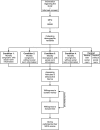The Effect of Moral Congruence of Calls to Action and Salient Social Norms on Online Charitable Donations: A Protocol Study
- PMID: 30416462
- PMCID: PMC6212564
- DOI: 10.3389/fpsyg.2018.01913
The Effect of Moral Congruence of Calls to Action and Salient Social Norms on Online Charitable Donations: A Protocol Study
Abstract
Online advertising is an important tool that can be utilized by charities to elicit attention and funding. A critical examination of advertisement strategies is thus necessary to increase the efficacy of fundraising efforts. Previous studies have shown that individuals' moral views and perceptions of social norms can play important roles in charitable behavior. Thus, the current protocol describes a study to examine whether framing charitable advertisements in line with participants' morality and increasing the salience of descriptive social norms increases subsequent charitable behavior. We describe experimental, online methods, whereby participants are provided with a framed call-to-action and normative information within a custom-developed application or existing survey platform. Furthermore, in the exploratory fashion, we discuss the possibility of collecting participants' Facebook data and predicting moral profiles from this data. If there is an increased rate of donations as a result of moral compatibility and/or increased norm salience, charities can leverage this knowledge to increase the donations by tailoring their campaigns in a more appealing way for their prospective donors. Moreover, if it turns out to be possible to predict one's moral profile from Facebook footprints, charities can use this knowledge to find and target people that are more likely to support their cause. However, this introduces important ethical questions that are discussed within this protocol.
Keywords: Facebook data; charitable behavior; moral foundations; moral identity internalization; social norms.
Figures




References
-
- Ajzen I. (1985). “From intentions to actions: a theory of planned behavior,” in Action Control: From Cognition to Behavior, eds Kuhi J., Beckman J. (Heidelberg: Springer; ), 11–39.
-
- Ajzen I. (1991). The theory of planned behavior. Organ. Behav. Hum. Decis. Process. 50 179–211. 10.1016/0749-5978(91)90020-T - DOI
-
- Ajzen I. (2006). Constructing a Theory of Planned Behavior Questionnaire. Available at: http://people.umass.edu/aizen/pdf/tpb.measurement.pdf
LinkOut - more resources
Full Text Sources
Miscellaneous

